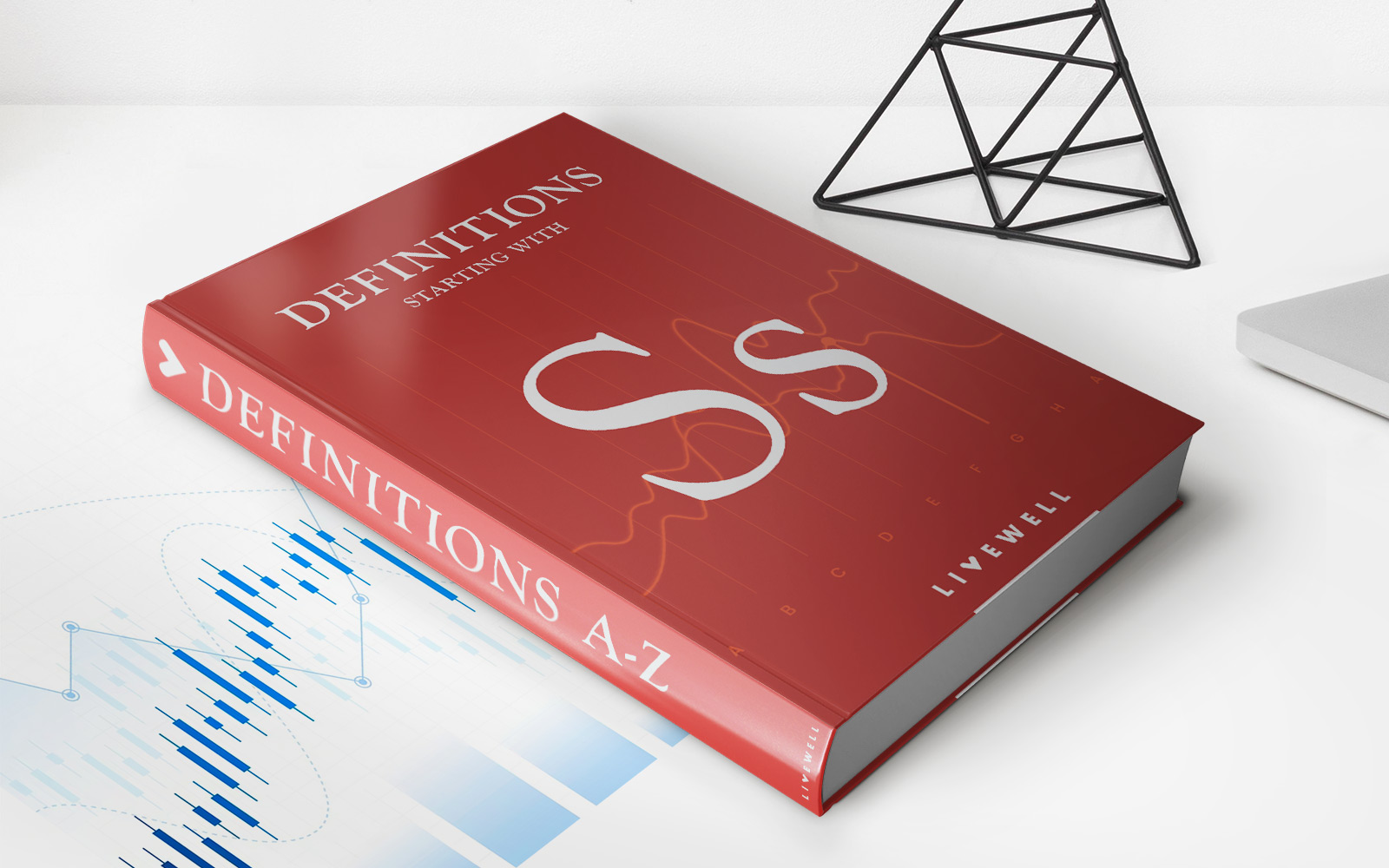

Finance
What Is Commodity Structured Trade Finance
Modified: March 1, 2024
Discover how commodity structured trade finance is revolutionizing the finance industry. Explore the benefits and opportunities in this dynamic field.
(Many of the links in this article redirect to a specific reviewed product. Your purchase of these products through affiliate links helps to generate commission for LiveWell, at no extra cost. Learn more)
Table of Contents
Introduction
Welcome to the world of commodity structured trade finance. In today’s global market, the trade of commodities plays a crucial role in the economy. Whether it’s oil, gas, metals, agricultural products, or any other raw material, these commodities are essential for industries and consumers worldwide. However, trading commodities comes with its fair share of challenges, including price fluctuations, supply chain complexities, and geopolitical risks.
To mitigate these risks and optimize their operations, businesses often turn to commodity structured trade finance. This specialized form of financing provides tailored solutions to facilitate the purchase, storage, transport, and sale of commodities across international borders. Commodity structured trade finance offers a unique blend of traditional banking services and commodity trading expertise, enabling businesses to navigate the complexities of the commodity market effectively.
Commodity structured trade finance is especially beneficial for emerging markets and developing economies, where access to capital and expertise is limited. It provides a reliable source of funding and mitigates the risks associated with commodity price volatility, currency fluctuations, and political instability. Through structured trade finance, businesses can secure the necessary working capital to expand their operations, explore new markets, and capitalize on trading opportunities.
In this article, we will delve deeper into the world of commodity structured trade finance, exploring its definition, key components, benefits, risks, and the process involved. We will also provide real-life case studies to highlight the practical applications and successes of commodity structured trade finance. By the end, you will have a comprehensive understanding of this specialized financing solution and its significance in the global commodity trade.
Definition of Commodity Structured Trade Finance
Commodity structured trade finance is a financial solution that facilitates the trading of commodities, such as oil, gas, metals, agricultural products, and other raw materials, across borders. It combines traditional banking services with commodity trading expertise to provide businesses with the necessary funding and risk management tools to engage in commodity transactions.
This form of finance is structured based on the specific needs and requirements of the commodity trade. It involves a range of financial instruments, such as letters of credit, pre-export financing, inventory financing, and structured loans, to support various stages of the commodity trading cycle, including sourcing, production, transportation, storage, and sales.
Commodity structured trade finance is often used by businesses involved in commodity trading, including producers, traders, manufacturers, and distributors. It enables them to access capital, manage cash flow, mitigate risks, and optimize their operations in the volatile and complex commodity market.
The key players in commodity structured trade finance include banks, commodity trading companies, logistics providers, insurers, and other service providers. These entities work together to provide comprehensive solutions that address the unique challenges and requirements of each commodity trade.
One of the distinguishing features of commodity structured trade finance is the collateralization of the commodity itself. The underlying commodity acts as security for the financing, providing lenders with the assurance that they can recover their funds even in the case of default. This collateralization minimizes the credit risk associated with commodity trading and allows businesses to access financing at competitive interest rates.
Furthermore, commodity structured trade finance often involves the use of hedging instruments, such as futures contracts and options, to manage and hedge against price fluctuations and currency risks. This helps businesses to protect their profit margins and mitigate the impact of market volatility.
Overall, commodity structured trade finance is a specialized financial solution that plays a crucial role in enabling businesses to navigate the complexities of the commodity market. It provides them with the necessary capital, risk management tools, and expertise to engage in profitable commodity trading activities and seize opportunities in the global marketplace.
Key Components of Commodity Structured Trade Finance
Commodity structured trade finance involves several key components that work together to provide businesses with a comprehensive solution for their commodity trading needs. These components include:
- Trade Financing: Trade financing is at the core of commodity structured trade finance. It involves providing businesses with the necessary funds to purchase commodities, either through pre-export financing, post-export financing, or structured loans. The financing terms are tailored to the specific requirements of the trade, considering factors such as the commodity type, trade cycle, collateralization, and risk exposure.
- Risk Management: Commodity trading comes with inherent risks, including price fluctuations, currency risks, political instability, and supply chain disruptions. Commodity structured trade finance incorporates various risk management tools to mitigate these risks. This includes the use of hedging instruments, such as futures contracts and options, to protect against price volatility. Additionally, insurance products may be utilized to cover potential losses due to physical damage, theft, or non-payment.
- Logistics and Storage: The transportation, storage, and handling of commodities are critical aspects of the trading process. Commodity structured trade finance often involves partnerships with logistics providers and storage facilities to ensure the efficient movement and storage of commodities. This component ensures that the commodities are properly managed and safeguarded throughout the trade cycle.
- Documentation and Compliance: International commodity trading involves a significant amount of documentation and compliance requirements. Commodity structured trade finance facilitates the preparation and verification of trade documents, such as letters of credit, bills of lading, and certificates of origin. This ensures compliance with international trade regulations and provides assurance to all parties involved in the trade.
- Market Intelligence and Research: To engage in successful commodity trading, businesses need access to accurate and up-to-date market intelligence and research. Commodity structured trade finance often provides insights and analysis on market trends, pricing, supply and demand dynamics, and geopolitical factors that can impact commodity prices. This component helps businesses make informed decisions and identify profitable trading opportunities.
These key components work in synergy to provide businesses with a comprehensive solution for their commodity trading needs. By addressing trade financing, risk management, logistics and storage, documentation and compliance, and market intelligence, commodity structured trade finance enables businesses to navigate the complexities of the commodity market and optimize their trading activities.
Benefits and Risks of Commodity Structured Trade Finance
Commodity structured trade finance offers various benefits for businesses engaged in commodity trading, but it is important to be aware of the associated risks as well. Let’s explore the benefits and risks of commodity structured trade finance:
Benefits:
- Access to Capital: Commodity structured trade finance provides businesses with the necessary working capital to engage in commodity trading activities. It allows businesses to access funds even in situations where traditional financing avenues may be limited.
- Risk Mitigation: Through the use of risk management tools and hedging instruments, commodity structured trade finance helps businesses to mitigate risks associated with price volatility, currency fluctuations, political instability, and supply chain disruptions. This allows businesses to protect their profit margins and minimize potential losses.
- Collateralization: The collateralization of the underlying commodity provides lenders with additional security, enabling businesses to access financing at competitive interest rates. This collateralization minimizes credit risk and enhances the attractiveness of the financing solution.
- Expertise and Market Intelligence: Commodity structured trade finance often involves partnerships with industry experts who provide valuable insights and market intelligence. This helps businesses make informed decisions and identify profitable trading opportunities.
- Expansion and Market Diversification: Commodity structured trade finance enables businesses to expand their operations, explore new markets, and capitalize on trading opportunities. It facilitates entry into emerging markets and provides the necessary funding and expertise to navigate unfamiliar territories.
Risks:
- Commodity Price Volatility: Commodity prices are subject to significant volatility, driven by factors such as supply and demand imbalances, geopolitical events, and global economic conditions. Fluctuations in commodity prices can impact the profitability of trade transactions, potentially leading to losses.
- Political and Regulatory Risks: Engaging in international commodity trading involves exposure to political and regulatory risks, including changes in government policies, trade sanctions, and legal disputes. These risks can disrupt trade flows, affect pricing, and impact the profitability of the trading activities.
- Operational and Logistic Risks: The transportation, storage, and handling of commodities involve operational and logistic risks, such as delays, damage, theft, and quality issues. Businesses need to have robust risk management and contingency plans in place to mitigate these risks.
- Counterparty Risk: Commodity trading involves multiple parties, including buyers, sellers, banks, and logistics providers. There is a risk of non-payment or default by one of the parties involved, which can lead to financial losses and disputes.
- Currency Risks: Engaging in international commodity trading exposes businesses to currency risks. Fluctuations in exchange rates can impact the profitability of trade transactions, especially when there is a time lag between the purchase and sale of commodities.
While commodity structured trade finance offers significant benefits, businesses need to carefully assess and manage the associated risks to ensure successful and profitable trading operations.
Process of Commodity Structured Trade Finance
The process of commodity structured trade finance involves several stages, from initial inquiry to the completion of the trade transaction. Let’s walk through the typical steps involved in commodity structured trade finance:
- Initial Assessment: The process begins with the prospective borrower or trader approaching a financial institution or a specialized trade finance provider with their commodity trade proposal. The financial institution evaluates the viability of the trade, including factors such as the commodity type, trade volumes, creditworthiness, and risk profile.
- Trade Financing Proposal: If the initial assessment is positive, the financial institution prepares a trade financing proposal tailored to the specific needs and requirements of the trade. This includes determining the appropriate financing structure, collateralization, repayment terms, and risk mitigation strategies.
- Due Diligence: Before finalizing the financing arrangement, the financial institution conducts a thorough due diligence process to assess the creditworthiness and financial stability of the borrower. This includes reviewing financial statements, credit history, trade references, and other relevant documents.
- Documentation: Once the due diligence process is completed, the necessary legal and trade documentation is prepared. This includes contracts, letters of credit, bills of lading, and other documentation required for the trade transaction. Compliance with international trade regulations and local laws is ensured.
- Disbursement of Funds: Upon the satisfaction of all contractual and legal obligations, the financial institution disburses the agreed-upon funds to the borrower or the trader. The funds are used to purchase the commodities or to finance various aspects of the trade, such as transportation and storage.
- Risk Management and Monitoring: Throughout the trade cycle, the financial institution actively monitors and manages the risks associated with the trade transaction. This includes monitoring commodity prices, currency fluctuations, compliance with contractual obligations, and ensuring adequate insurance coverage.
- Trade Settlement: Once the commodities are delivered to the buyer as per the agreed-upon terms, the financial institution facilitates the settlement of the trade transaction. This may involve the payment of the seller, resolution of any discrepancies, and the release of relevant documents.
- Repayment and Closeout: After the completion of the trade transaction, the borrower or the trader is responsible for repaying the financing amount as per the agreed-upon terms. The financial institution reconciles all financial transactions, closes out the financing facility, and releases any collateral or guarantees.
The process of commodity structured trade finance can vary depending on the specific trade, commodity, and parties involved. It requires close collaboration between the borrower or trader and the financial institution to ensure a smooth and successful trade transaction.
Case Studies of Commodity Structured Trade Finance
Let’s explore two real-life case studies that highlight the practical applications and successes of commodity structured trade finance:
Case Study 1: Oil Trading Financing
An oil trading company based in a developing country wanted to expand its operations and take advantage of favorable market conditions. However, access to sufficient working capital was a major challenge for the company. They approached a global bank specializing in Commodity Structured Trade Finance for assistance.
The bank conducted a thorough assessment of the company’s trade proposal, evaluating its creditworthiness, the viability of the trade, and the associated risks. Based on the assessment, the bank structured a financing solution that provided the necessary working capital to purchase and trade oil.
The financing facility included pre-export financing, which allowed the company to secure funds against confirmed purchase orders from buyers. The bank collateralized the underlying oil shipments to mitigate the credit risk and provided competitive interest rates. Additionally, the bank provided risk management tools, such as hedging instruments, to protect against price fluctuations.
With the support of Commodity Structured Trade Finance, the oil trading company was able to purchase and transport large quantities of oil, expanding its trading activities and establishing new partnerships. The financing facility provided the necessary liquidity, enabling the company to take advantage of profit opportunities and navigate the challenges of the volatile oil market.
Case Study 2: Agricultural Commodity Financing
Agricultural commodity producers in a developing country faced challenges in accessing financing for their harvests. Banks in the region were hesitant to provide the necessary capital due to the perceived risks associated with agriculture. To address this issue, a regional development bank introduced a specialized Commodity Structured Trade Finance program.
The program offered a comprehensive financing solution for agricultural producers. Farmers could access pre-export financing that was collateralized by their future harvests. The bank worked closely with agricultural cooperatives to assess the creditworthiness of the farmers and ensure the quality and quantity of the harvests.
The financing enabled the farmers to purchase seeds, fertilizers, and equipment, as well as cover operational costs. The bank also provided insurance coverage to protect against weather-related risks and potential losses. The financing terms were structured to align with the agricultural cycle, offering flexibility in repayment based on the timing of the harvest and subsequent sale of the commodities.
As a result of the Commodity Structured Trade Finance program, agricultural producers had improved access to working capital, empowering them to increase their production and contribute to food security in the region. The financing program also helped build resilience in the agricultural sector by providing risk management tools and resources for farmers to navigate market fluctuations.
These case studies illustrate how Commodity Structured Trade Finance can address the financing needs of commodity traders and producers, enabling them to expand their operations, mitigate risks, and capitalize on trading opportunities.
Conclusion
Commodity structured trade finance plays a vital role in facilitating the trading of commodities across borders. By combining traditional banking services with commodity trading expertise, this specialized form of financing provides businesses with the necessary capital, risk management tools, and market intelligence to engage in profitable commodity transactions.
Through commodity structured trade finance, businesses can access working capital, mitigate risks associated with price volatility and geopolitical factors, and navigate the complexities of the commodity market. The collateralization of the underlying commodities provides lenders with additional security, enabling businesses to access financing at competitive interest rates.
The key components of commodity structured trade finance, including trade financing, risk management, logistics and storage, documentation and compliance, and market intelligence, work together to provide comprehensive solutions for businesses engaged in commodity trading.
While there are benefits to commodity structured trade finance, businesses must also be mindful of the associated risks, such as commodity price volatility, political and regulatory risks, operational and logistic risks, counterparty risk, and currency risks. Effective risk management strategies and contingency plans are essential to mitigate these risks.
Real-life case studies highlight the practical applications and successes of commodity structured trade finance. These case studies demonstrate how commodity structured trade finance enables businesses to access financing, expand their operations, manage risks, and capitalize on trading opportunities.
In conclusion, commodity structured trade finance is a valuable and specialized financing solution that supports and facilitates the global commodity trade. With its unique blend of financial services and commodity trading expertise, it empowers businesses to navigate the complexities of the commodity market and drive growth in the global economy.














